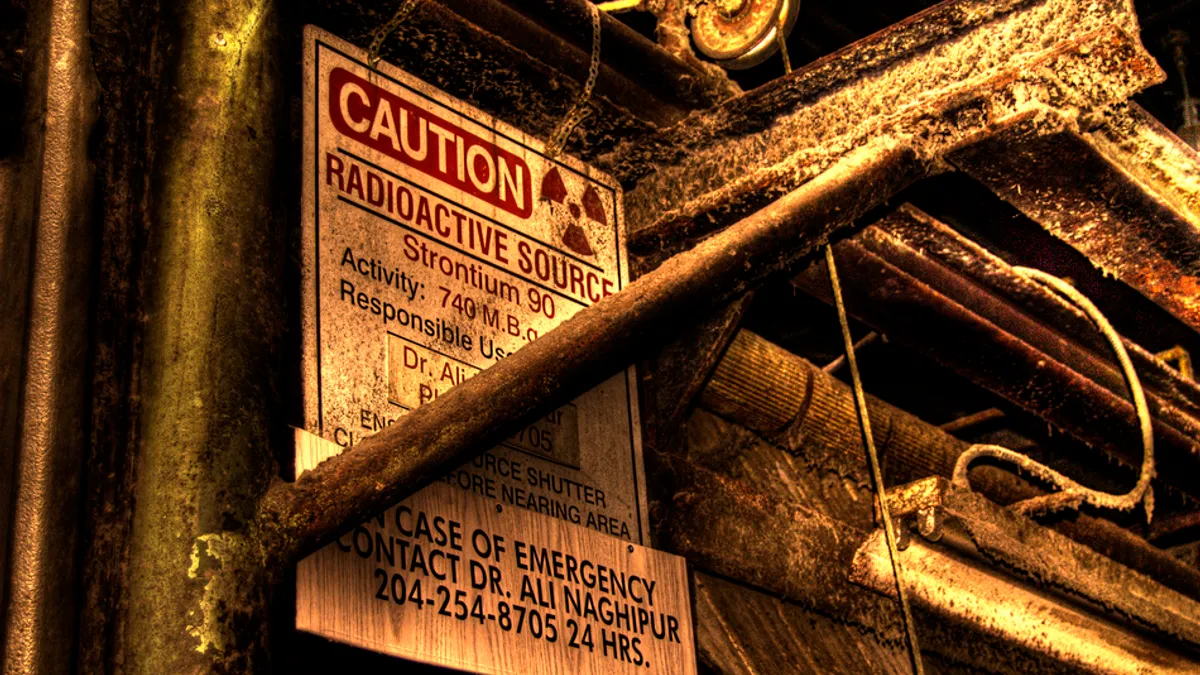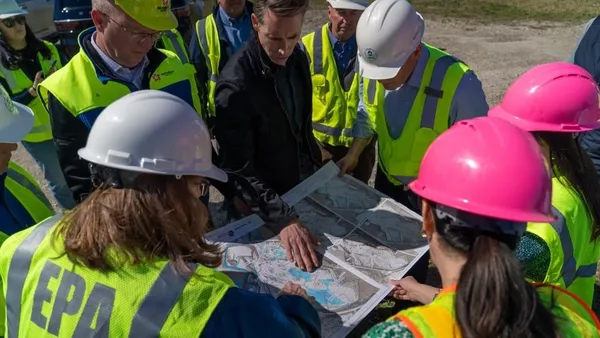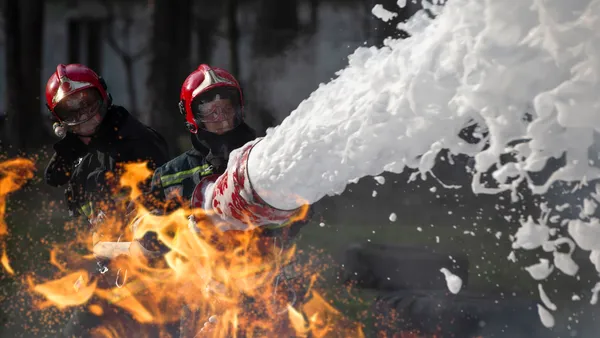UPDATE: Despite plans to build an underground barrier between Bridgeton Landfill and West Lake Landfill, residents have reported to be frustrated and claim the fire-prevention efforts are not enough, according to International Business Times and Al Jazeera.
"It’s looking more and more like removal is the only way to guarantee [a safe solution]," said local resident Dawn Chapman to Al Jazeera. "Life’s over for [people] in this community. They can’t live where they are. They can’t enjoy it."
Ed Smith, representative of the Missouri Coalition for the Environment, agreed with Chapman, stating, "The only way to guarantee the radioactive content will never come in contact with the subsurface fire in the future is to remove the radioactive material ... We’ve watched the EPA work on the barrier plan now for almost two years whereas they could have been planning for the removal of the radioactive waste."
Dive Brief:
- The EPA is ordering that an underground barrier be installed to prevent a fire at Missouri’s Bridgeton Landfill from reaching radioactive waste at nearby West Lake Landfill, following the release of a new study showing that the waste has spread to neighboring areas. Ongoing research is testing storm water runoff for radioactive pollution, as reported in RT.com
- Of almost 300 soil samples from 200-square-kilometers surrounding West Lake, 48% had concentrations of a toxic isotope that were "above the risk-based soil cleanup limits for residential farming," according to the recent study published in the Journal of Environmental Radioactivity. The authors said there is "strong evidence" that radon gas and water originating at the landfill are responsible for these high levels.
- Both landfills are owned by Republic Services whose subsidiaries will pay for the work, along with Cotter Corp., who hired the contractor that illegally dumped the nuclear material.
Dive Insight:
The West Lake Landfill has been the subject of controversy for years as the nearby fire draws closer to the radioactive site, and as the EPA has said, they are watching over the situation. Finally, late last year, the agency ordered surface fire prevention for West Lake Landfill among other precautionary mandates.
Now the EPA has pushed for more measures to prevent the fire from reaching West Lake, at a time when the latest study presents the strongest evidence that the hazardous contaminants have spread and provides a compelling comparison to other scenarios involving radioactive waste.
"The stuff we're talking about at West Lake is hotter than what you would find in a typical uranium mill tailings operation," said Bob Alvarez, one of the study authors.
The detected levels of lead-210, compared to other isotopes in the radioactive decay, suggest it came from the "short-lived, fugitive radon gas that escaped the landfill," according to the study.
A 2013 report found that West Lake had the largest estimated amount of thorium-230, a highly radiotoxic element than any other nuclear weapons storage or disposal site in the US.














